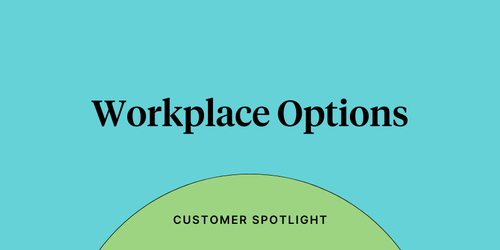
Article

Written by

Founder & CEO, Culture Amp
Something we hear quite often from senior leaders is that they don’t believe in anonymous employee feedback. They want a culture where people are willing to attach their names to the feedback that they're giving. Although I can empathize with the desire to create a workplace where people aren’t just taking shots from the sideline, there are risks to only allowing attributed feedback. This is particularly the case when it comes to aspects of the employee experience, like psychological safety.
In this article, we explain why there is value in giving your people space to share feedback without any fear of reprisal.
To begin, let's differentiate between anonymous and attributed feedback.
That being said, there are levels of anonymity in feedback, and the key is to find a balance between attributed and anonymous feedback. Creating the space for genuinely anonymous feedback may help you get truly honest feedback, but it will make it extremely difficult for you to take effective action. For example, if you receive anonymous feedback from someone who doesn't feel adequately supported by their leader, you won't know which leader they're talking about.
On the other hand, if an organization only has entirely attributed feedback, there’s no way to know whether or not people are being fully honest. If you give people the opportunity to provide anonymous feedback and they use it, then there’s clearly a need for it.
The best practice, in our opinion, is to collect feedback in a way where you can't identify the individual, but you can identify which group they come from. While the Culture Amp platform technically collects attributed feedback, we ensure it’s confidential, so that leaders and managers who view the feedback won't be able to trace a particular piece of feedback to a single person.
To do this, we bucket our workforce into groups (i.e., by team, tenure, demographics, etc.) and look at feedback at an aggregate level. The tool will never let us see what an individual said, but we may be able to see that five people who work remotely said the same thing. This level of attribution makes the feedback actionable.
Furthermore, we always run a small truly anonymous survey alongside our attributed feedback, to make sure we are accurately capturing people's sentiments.
When a leader tells me that everybody at their company is comfortable having their name attached to their feedback, I ask them if they’ve ever actually tested that. Have you done a proper anonymous survey and asked people to tell you what they think?
The case against anonymous feedback is that it creates an opportunity for people to say things without consequence and doesn’t lead to constructive outcomes. People may say something is annoying them but not offer any ideas on how to fix it. But when you’re trying to create truly creative, innovative places, you actually want people to bring problems rather than solutions. When you jump to solution mode, you’re already in a fixed mindset. We want people to share issues and then work out how to confront them together.
Allowing people to give anonymous or confidential feedback also creates an opportunity for people to say what they actually think rather than what they think it’s safe to say. Even at Culture Amp, where we strive to be as vulnerable as possible and make as much space for everybody’s voices as we can, people still choose to ask questions through an anonymous format.
The questions and feedback we receive anonymously run the spectrum from the banal to the really deep. We’ve had people ask why I didn’t want the Melbourne office to have a coffee machine, for example. This led to a comprehensive discussion around who would clean the machine if we did have it. While not a deep matter it gave someone the opportunity to raise a perception they had about me and for us to get that out in the open.
The most valuable questions for me are around our company values. People have asked questions about how they’ve seen the values used and whether they’re still effective or need to be changed or removed. That has allowed us to have a really interesting conversation about our values, what it means to trust people to make decisions and what the consequences of that are.
Somebody also asked me whether I believe the Culture First experience that we’re trying to create should be equally accessible to all. This person was in a service group and their perspective was that our company was an amazing place for those in sales or product areas, but they didn’t feel they had access to the same opportunities. The anonymous forum was hugely important because it gave that person a voice and allowed me to validate that they should be able to access the same things. These were really valuable questions that opened up conversations that may not have happened if we didn’t have an anonymous forum.
It goes to show that no matter how mature your culture is if you only have attributed feedback it’s less likely you’ll hear about uncomfortable beliefs that exist in the organization. It’s important to create a safe space where you can have those conversations.
I believe it is possible to have an environment where people give each other fully attributed feedback but it takes a lot of time to create that trust. So don’t automatically assume you should start there. There’s a maturity curve. If you start with full attribution you’ll never know what people aren’t saying.
My recommendation is to give people more space than you think they need and look to go up the curve. Start by giving people an open space where there is some anonymity with no fear of reprisal. Once they’re comfortable you can slowly move towards more attribution.
